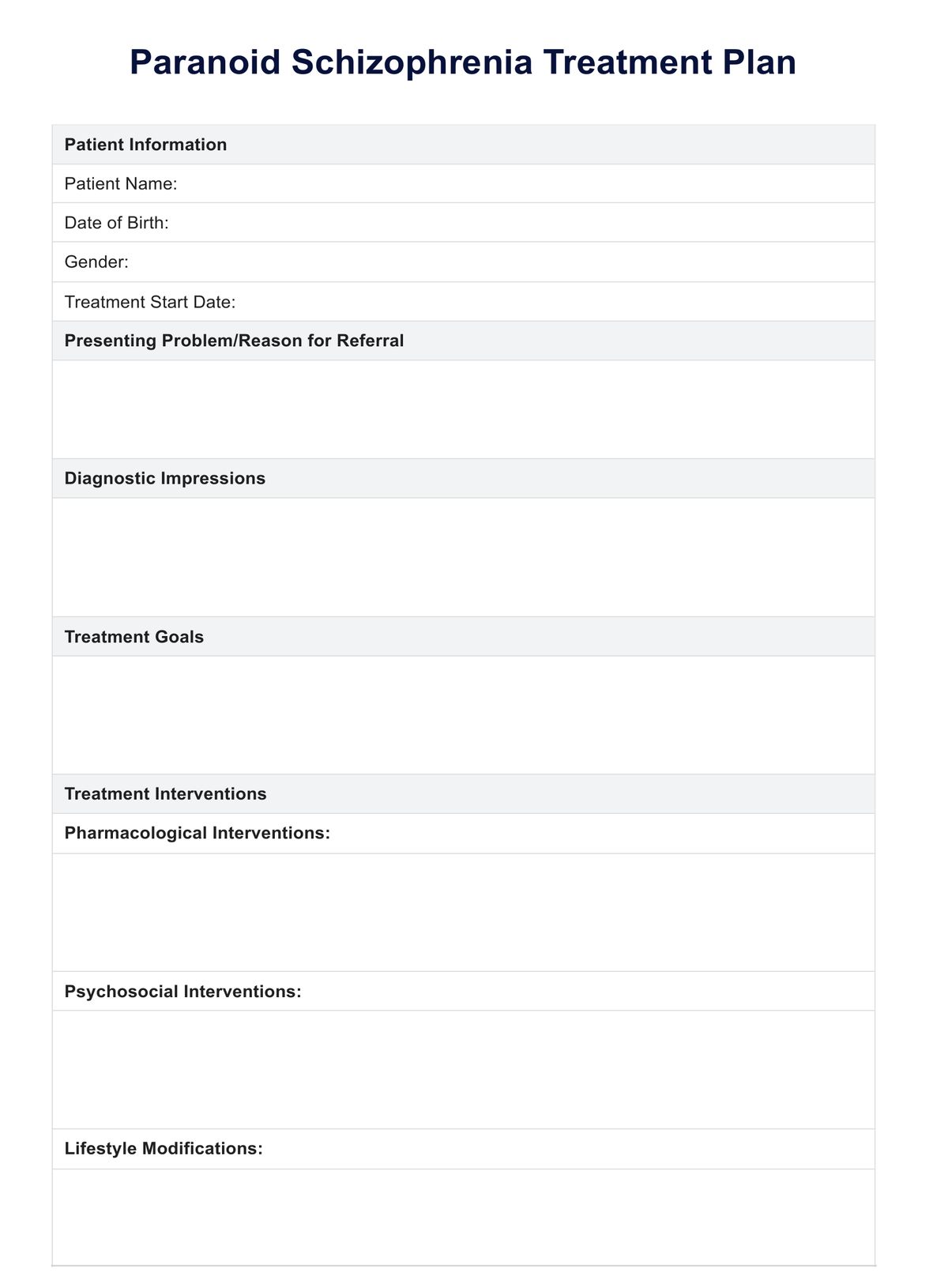Diagnosis involves a comprehensive psychiatric evaluation, medical history review, and possibly brain imaging or blood tests to rule out other conditions.

Paranoid Schizophrenia Treatment Plan
Explore a comprehensive treatment plan template for paranoid schizophrenia to monitor progress and improve client outcomes.
Paranoid Schizophrenia Treatment Plan Template
Commonly asked questions
Yes, antipsychotic medications can have side effects, including weight gain, sedation, tremors, and metabolic disturbances. However, these side effects can often be managed or minimized by adjusting the dosage or switching to a different medication.
Yes, antipsychotic medications can have side effects, including weight gain, sedation, tremors, and metabolic disturbances. However, these side effects can often be managed or minimized by adjusting the dosage or switching to a different medication.
EHR and practice management software
Get started for free
*No credit card required
Free
$0/usd
Unlimited clients
Telehealth
1GB of storage
Client portal text
Automated billing and online payments











